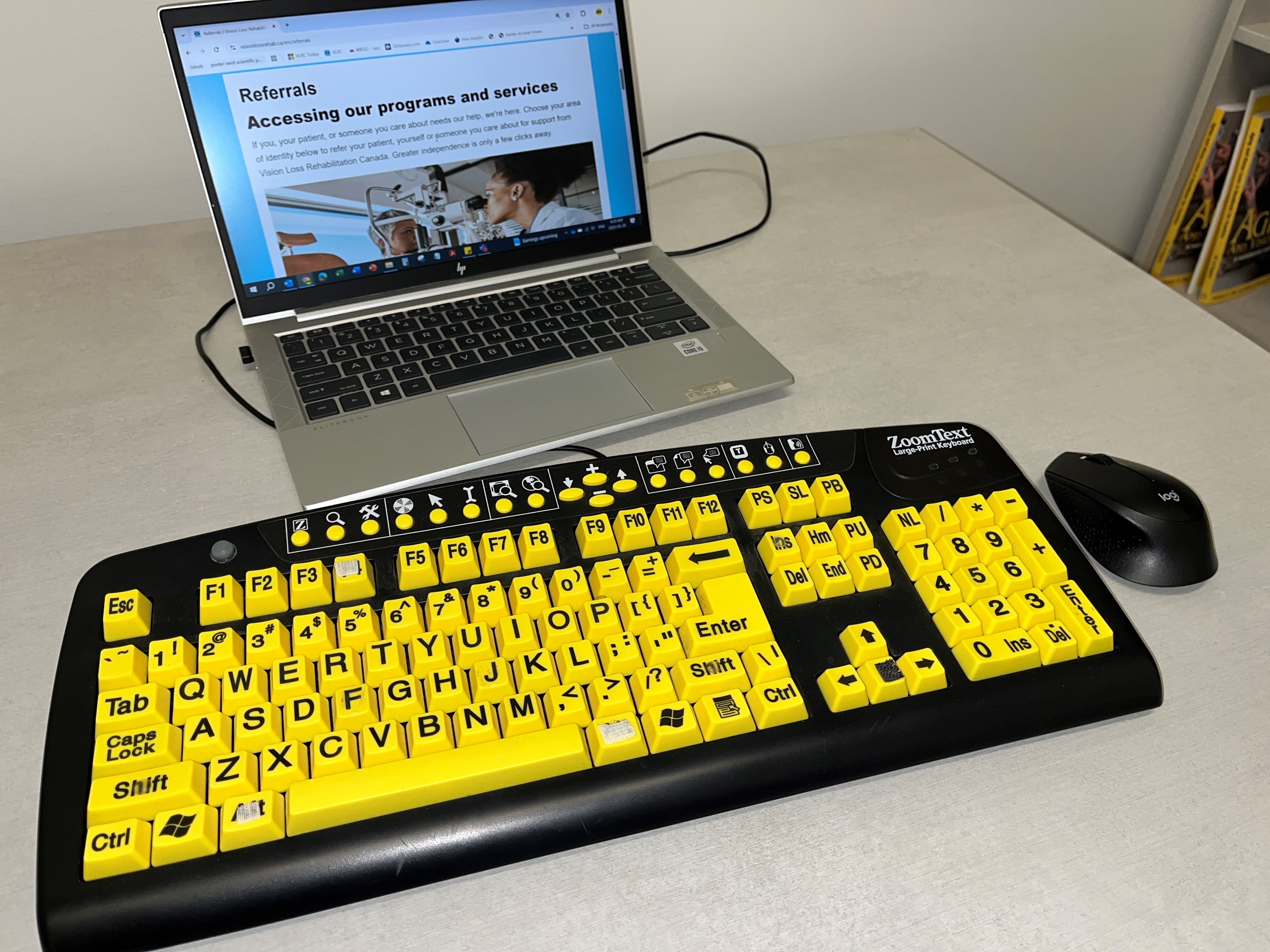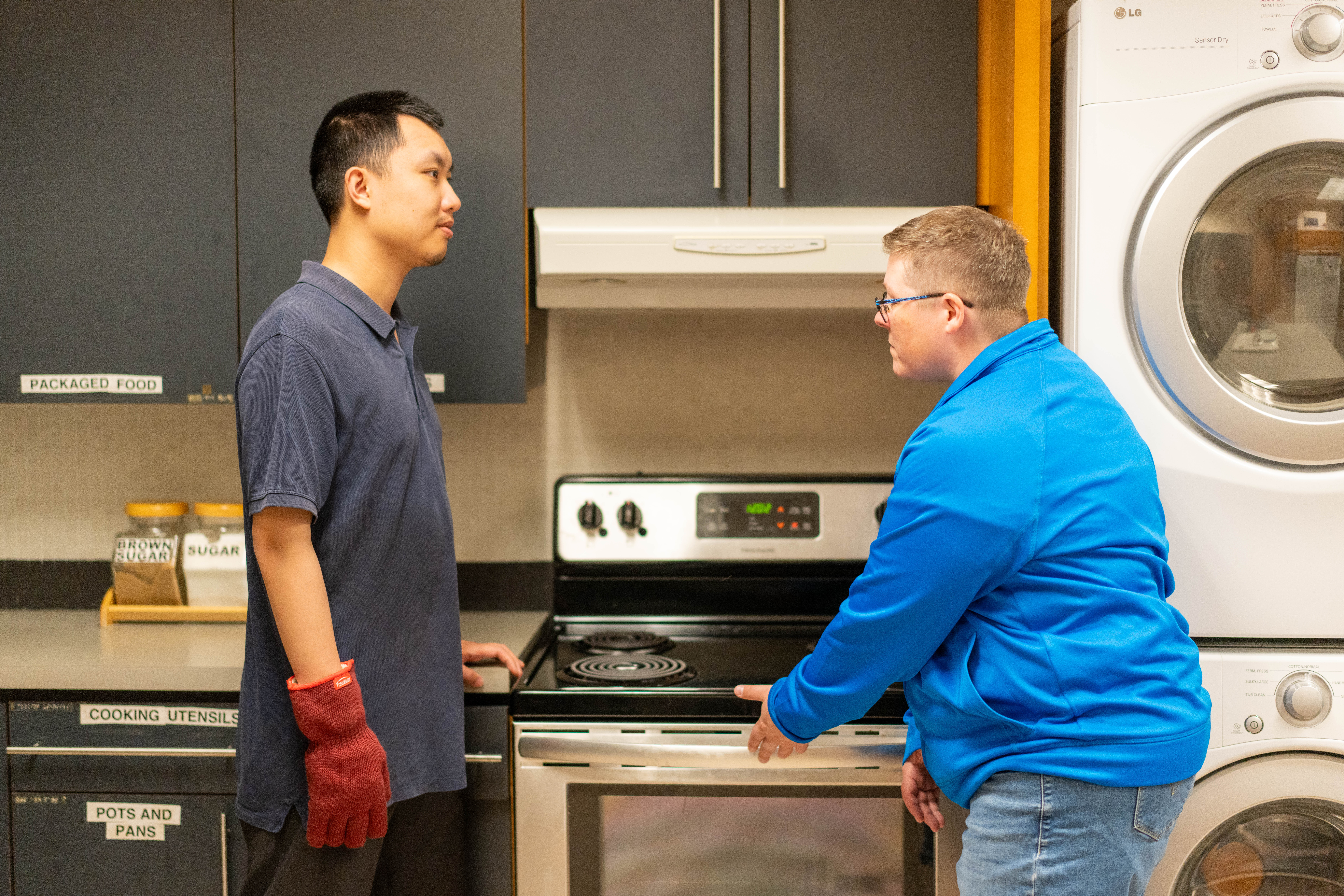Services de soins de santé aux Autochtones
Qu’est-ce que la réadaptation en déficience visuelle?
 La réadaptation en déficience visuelle est un processus spécialisé qui aide les personnes ayant une perte de vision à acquérir et à conserver les compétences nécessaires pour mener une vie autonome au quotidien. Il n'y a pas de limite d'âge et la réadaptation visuelle peut bénéficier à des personnes de tous âges.
La réadaptation en déficience visuelle est un processus spécialisé qui aide les personnes ayant une perte de vision à acquérir et à conserver les compétences nécessaires pour mener une vie autonome au quotidien. Il n'y a pas de limite d'âge et la réadaptation visuelle peut bénéficier à des personnes de tous âges.
Grâce à la réadaptation visuelle, les personnes ayant une perte de vision peuvent apprendre à tirer le meilleur parti de leur vision restante et à développer des capacités compensatoires pour vivre de manière autonome. La réadaptation visuelle fait appel à toute une gamme de techniques et de stratégies, dont les suivantes :
- Techniques d'adaptation
- Technologie d'assistance
- Aides visuelles pour basse vision
- Formation à l'orientation et à la mobilité
La réadaptation en déficience visuelle pourrait vous convenir si :
Vous avez une basse vision, une perte de vision ou des difficultés dans votre vie quotidienne.
Mais qu’est-ce que tout cela signifie?
Autrement dit, une personne ayant une basse vision ne peut pas corriger entièrement sa vision à l'aide de lunettes ou de lentilles cornéennes. Elle peut avoir l'une des diverses affections dont les suivantes : dégénérescence maculaire, glaucome, rétinopathie diabétique, cataracte et maladies oculaires liées à l'âge.
La perte de vision peut varier d'une vision partielle à la cécité totale et comprendre différents degrés de perception de la lumière. Les personnes peuvent avoir une basse vision à la naissance ou perdre la vue à tout moment de leur vie. De plus, les personnes qui ont subi un accident vasculaire cérébral, un traumatisme crânien, une méningite ou une tumeur au cerveau peuvent perdre leur vision.
De nombreuses personnes ayant une basse vision ou une limitation visuelle peuvent connaître des difficultés dans leur vie quotidienne. Il peut s'agir de difficultés à lire des livres ou des étiquettes de produits, à se déplacer à l'intérieur ou à l'extérieur, d'une réticence à pratiquer des loisirs ou à accomplir des tâches professionnelles ou scolaires.
Comment RDVC peut vous aider avec vos besoins de réadaptation en déficience visuelle?
 Notre équipe de spécialistes agréés est là pour vous aider ou aider l'un de vos proches. Nous pouvons vous apprendre à utiliser des aides visuelles et des techniques pour tirer le meilleur parti de votre vision restante. Nous vous aiderons à découvrir de nouvelles façons d'accomplir des tâches importantes et de vous orienter dans votre environnement. Grâce à nos services et à notre soutien, vous pourrez vivre de manière aussi autonome que possible.
Notre équipe de spécialistes agréés est là pour vous aider ou aider l'un de vos proches. Nous pouvons vous apprendre à utiliser des aides visuelles et des techniques pour tirer le meilleur parti de votre vision restante. Nous vous aiderons à découvrir de nouvelles façons d'accomplir des tâches importantes et de vous orienter dans votre environnement. Grâce à nos services et à notre soutien, vous pourrez vivre de manière aussi autonome que possible.
À RDVC, nous croyons que la réadaptation en déficience visuelle fait partie d'un effort de collaboration. Nous créerons un programme personnalisé pour vous et impliquerons votre communauté, y compris les membres de votre famille, les aînés, vos employeurs et vos enseignants, ainsi que votre équipe de professionnels de la santé.
Nous vous encourageons à remplir notre Formulaire d’aiguillage autonome pour commencer votre parcours de réadaptation en déficience visuelle dès aujourd'hui.
Initiative de dépistage oculaire (EHSI)
 L'initiative de dépistage oculaire (EHSI) est un programme de dépistage communautaire primé, utilisant l'intelligence artificielle. Il est conçu pour détecter la rétinopathie diabétique (RD), qui est la principale cause de perte de vision chez les adultes en âge de travailler.
L'initiative de dépistage oculaire (EHSI) est un programme de dépistage communautaire primé, utilisant l'intelligence artificielle. Il est conçu pour détecter la rétinopathie diabétique (RD), qui est la principale cause de perte de vision chez les adultes en âge de travailler.
L'EHSI offre des services de dépistage directement aux communautés défavorisées, rurales, isolées et autochtones. À l'aide d'appareils portables permettant de photographier le fond de l'œil et d'un logiciel d'intelligence artificielle (IA), le programme offre des dépistages rapides (15 minutes), adaptés à la culture et tenant compte des traumatismes, directement au sein de la communauté, ce qui réduit les obstacles à l'accès et améliore les résultats en matière de santé.
On transmet les images des yeux des personnes qui reçoivent un dépistage positif à un ophtalmologiste pour un examen plus approfondi et une confirmation. Tous les participants reçoivent du matériel éducatif adapté à leur culture sur la rétinopathie diabétique et la santé oculaire. Cette approche ciblée et centrée sur la communauté réduit les délais d'attente et améliore l'accès aux soins, ce qui entraîne une meilleure satisfaction des patients et de meilleurs résultats en matière de santé.
Si vous souhaitez en savoir plus ou si votre organisation souhaite collaborer avec nous pour réduire les cas de perte de vision causée par la rétinopathie diabétique, nous vous encourageons à visiter notre page Initiative de dépistage oculaire.
